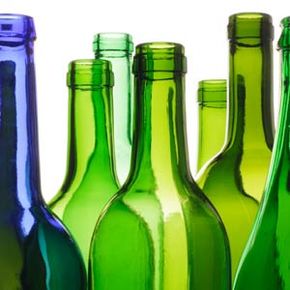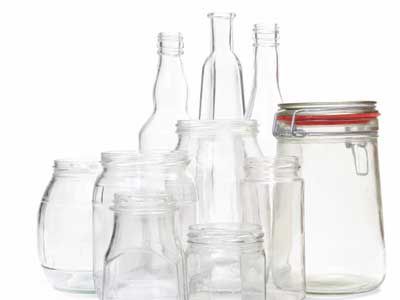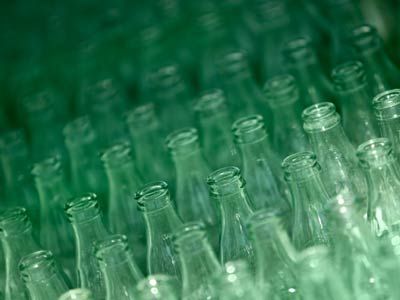Brilliant colors, sturdy materials ... it seems like such a shame to throw those wine bottles away. There must be something you can do with them, right?
Absolutely. Glass bottles are the material -- and the inspiration -- for a wide variety of crafts. Creative recyclers have converted old bottles into any number of household objects and works of art. Some craftspeople slice the bottle's neck into rings that become the components of wind chimes and mobiles. Some wire the bottles for electricity. Some mortar the bottles together into striking, colorful walls. Still others "slump" the bottles -- that is, melt them into unusual new free-form shapes.
Advertisement
You'll need a few tools for bottle crafts, including a tile cutter, stained-glass saw or diamond-bladed wet saw for cutting the glass and a power drill with a glass-cutting tip. A carborundum stone or a buffer wheel can be used to smooth out edges [source: Alpine Glass]. Make sure the wheel is designed for glass or ceramics. If you have a rotor tool, such as a Dremel, you can probably find a buffer attachment for it.
Nail polish remover will get rid of any painted labeling -- but remember, it will take off almost any paint or finish, so be careful where you use it. You can soak the bottle in a solution of water and bleach or use Goo-Gone or a similar product to remove the paper labels. A crimper will be handy for installing wiring. And finally, you'll want a smock, gloves and safety goggles.
To slump bottles, you'll need a kiln. This may be a larger investment than you're willing to make at first. As an alternative, look for local potters or craft and design schools -- they may be willing to let you use their kilns.
In this article, we'll explore a few different bottle crafts, including chandeliers, lights, plant nannies and vases. Throughout this article, we'll discuss wine bottles, but most of these ideas will also work for beer, liquor and glass water bottles. Remember, the only rules are practice safe crafting and satisfy your own creativity and ingenuity. Since these projects require working with glass and major tools, they are not intended for young teens and children.
These ideas are just suggestions. You can probably come up with many additional creations. Read on to get started.
Advertisement


